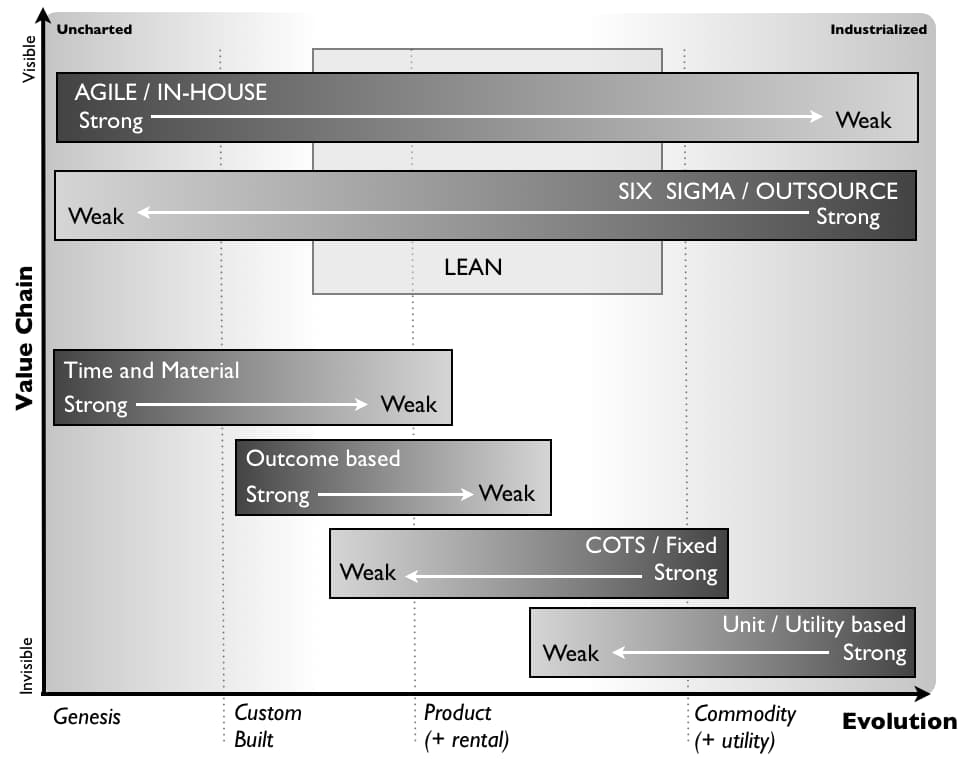Phase: Stop Self Harm
Principle: Use Appropriate Methods
Use Appropriate Methods
Development
Motivation
In business, the industrialized domain encourages coherence, coordination, efficiency, and stability. Yet, the discovery of new capabilities in the uncharted domain requires experimentation. Any structure, a company, or a team, needs to manage both of these polar opposites. Components are also evolving between these extremes. These transitional components have a different set of characteristics. They need a third mechanism of management.
Consider these first
Illustrative description
Certain components are suitable for outsourcing and others we should build in-house.
Detailed description
Use Agile Methods in the uncharted space. As the component evolves, Use Lean Methods. Use Six Sigma Methods for industrialized components. Use Appropriate Purchasing Methods depending on evolutionary stages. Any significant system will have components at different stages of evolution. At any one moment in time, there is no single method that will fit all. Add appropriateness of methods to the list of challenges.

